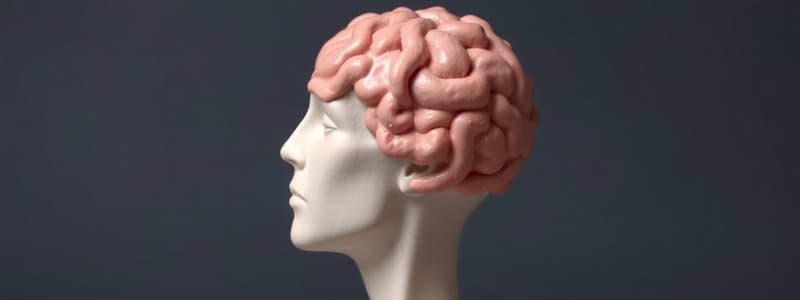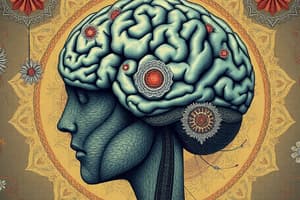Podcast
Questions and Answers
Which of the following models suggests that predisposition to develop illness can be activated by environmental stressors?
Which of the following models suggests that predisposition to develop illness can be activated by environmental stressors?
- One-Dimensional Models
- Diathesis-stress model (correct)
- Biopsychosocial model
- Multipath Models
Who originally proposed the diathesis-stress model?
Who originally proposed the diathesis-stress model?
Meehl
What does the biopsychosocial model emphasize?
What does the biopsychosocial model emphasize?
Interactions between biological, psychological, and social factors
The biopsychosocial model tackles the effects of poverty and discrimination in explaining mental disorders.
The biopsychosocial model tackles the effects of poverty and discrimination in explaining mental disorders.
The _____ model integrates biological, psychological, social, and sociocultural influences on mental disorders.
The _____ model integrates biological, psychological, social, and sociocultural influences on mental disorders.
What is a limitation of one-dimensional models of mental disorders?
What is a limitation of one-dimensional models of mental disorders?
What is the main purpose of the multipath model?
What is the main purpose of the multipath model?
Flashcards are hidden until you start studying
Study Notes
Models of Abnormal Behavior
- Researchers use various models to study mental disorders, each based on a specific theoretical approach.
- Models help researchers understand the causes of mental disorders, organize information, make informed guesses, and ask insightful questions.
Diathesis-Stress Model
- Originally proposed by Meehl in 1962 and further developed by Rosenthal in 1970.
- Suggests that individuals inherit a predisposition to develop a mental disorder (diathesis) which may be activated by environmental stressors.
- A supportive environment can prevent the development of a mental disorder, even if the predisposition exists.
Biopsychosocial Model
- Conceptualized by George Engel in 1977.
- Proposes that mental disorders are caused by interactions between biological, psychological, and social factors.
Limitations of the Biopsychosocial Model
- Limited focus on the interaction of factors in producing mental illness.
- Provides little guidance on how to treat the disorder.
- Neglects the powerful influence of culture.
One-Dimensional Models
- These models oversimplify mental disorders by offering a single explanation, neglecting the complexity of contributing factors.
- They often create a false dichotomy between explanations, such as nature vs. nurture.
- They fail to consider the reciprocal influences of various factors.
Multipath Model
- Developed by Sue et al. (2016).
- Integrates biological, psychological, social, and sociocultural influences to explain mental disorders.
- Addresses the limitations of one-dimensional models.
- Emphasizes the interaction of various factors to contribute to mental illness.
Key Assumptions of the Multipath Model
- No single theoretical perspective can adequately explain the complexity of mental disorders.
- Numerous factors can influence the development of mental disorders, including biological, psychological, social, and sociocultural factors.
- Interactions between these factors play a crucial role.
- Mental disorders should be understood within a holistic framework, considering all contributing factors.
Benefits of the Multipath Model
- Provides a comprehensive understanding of mental disorders by acknowledging multiple factors.
- Emphasizes the dynamic interplay between factors.
- Promotes a holistic perspective, encouraging a more complete understanding of the development and treatment of mental disorders.
Studying That Suits You
Use AI to generate personalized quizzes and flashcards to suit your learning preferences.




